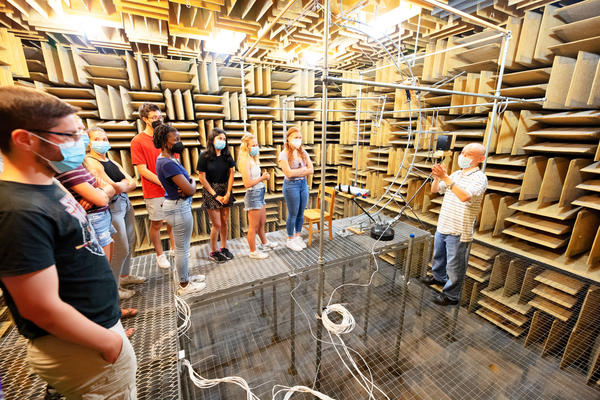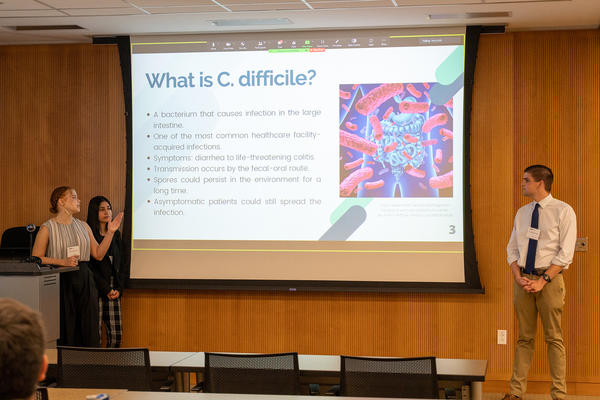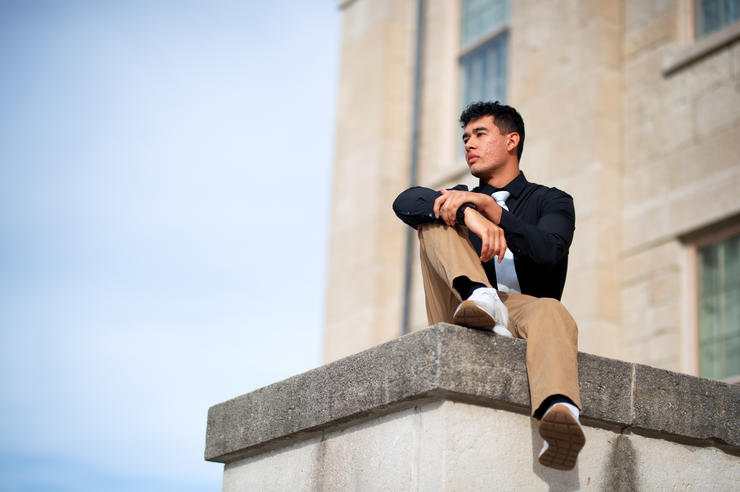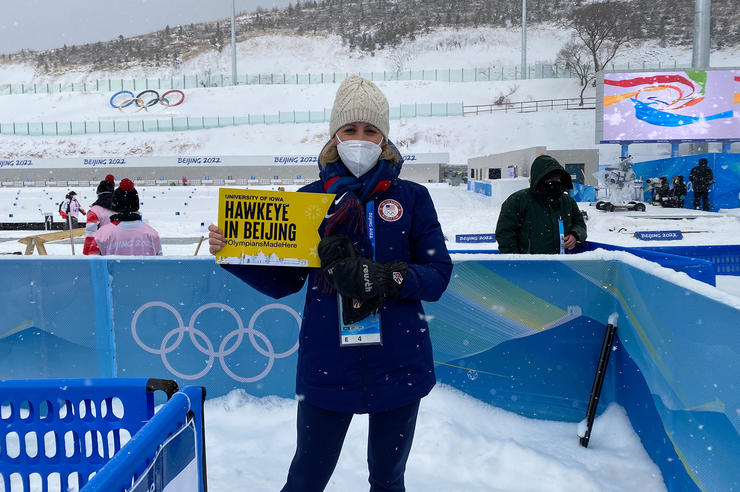Next generation of biostatisticians convene at Iowa
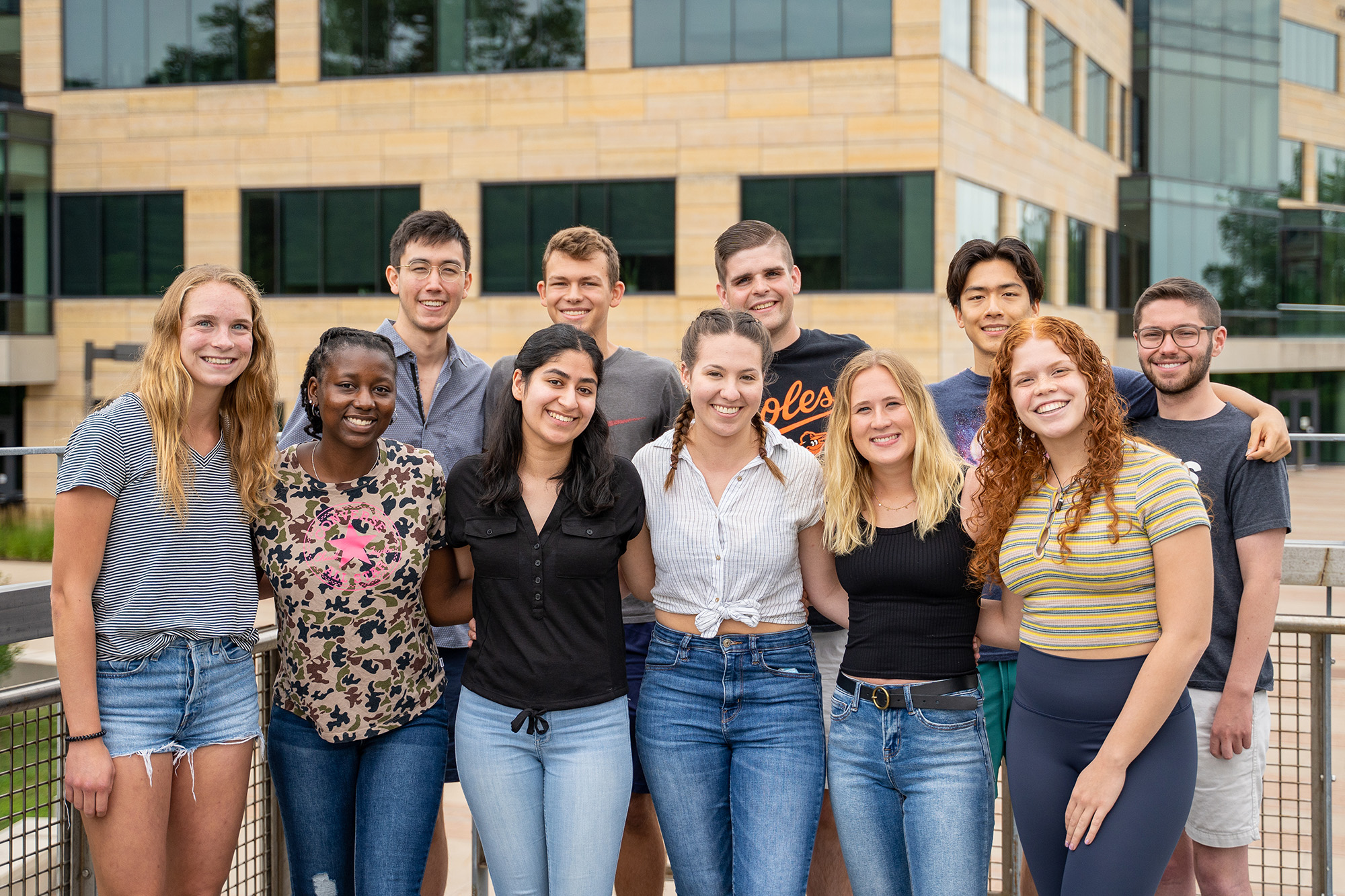
Delaney Underwood started at Central College in Pella, Iowa, thinking she would major in mathematics. An interest in health fields led the fourth-year student to major in biology—but she still loved math.
So, when a statistics professor suggested Underwood look into the Iowa Summer Institute in Biostatistics (ISIB) at the University of Iowa, she was intrigued.
“It seemed like a perfect fit for me, combining what I like most about biology and math,” Underwood says.
The Iowa Summer Institute in Biostatistics (ISIB) is a seven-week program that provides biostatistical research education and applied research opportunities to undergraduates.
Tuition, round-trip transportation, meal allowance, and lodging are provided by the program, which is funded by the National Institutes of Health (NIH) and the National Heart, Lung, and Blood Institute (NHLBI).
The discipline of biostatistics interprets scientific data, analyzes trends, and answers research questions in the fields of medicine, biology, and public health. Biostatisticians contribute to important research that improves lives and work in a variety of settings, including hospitals, research facilities, educational institutions, and government organizations.
The ISIB is a seven-week program funded by the National Institutes of Health (NIH) and the National Heart, Lung, and Blood Institute (NHLBI) that provides biostatistical research education and research opportunities to undergraduates and graduates with interest in the field.
Gideon Zamba, director of the ISIB and professor in the Department of Biostatistics in the UI College of Public Health, says the program, which began in 2008 with a pilot trial, was designed to provide undergraduate students an entry point to the growing field and encourage them to consider graduate programs related to biostatistics and data science.
“In a perfect world, 100% of them would go on to become biostatisticians and data scientists,” Zamba says. “It doesn’t always turn out that way, but more than 80% of our ISIB participants who pursue graduate education do go into the field, and those who don’t still tend to become ambassadors of the field.”
The students who attend the ISIB come from across the United States and have a variety of majors. The summer 2022 students traveled from as far as California and Massachusetts and are majoring in a range of disciplines, including mathematics, biology, computer science, and physics.
“Our students don’t have the same backgrounds or majors, but we think they all have the tools to be the next generation of biostatisticians and data scientists,” Zamba says.
The first three weeks of the program consist largely of a crash course in the basics of biostatistics. During this time, the students also earn their human subjects certification to participate in research projects with Iowa faculty during the final four weeks. Scattered throughout the summer are guest speakers and field trips to Iowa labs and facilities, such as the National Advanced Driving Simulator and Speech and Hearing Anechoic Chamber.
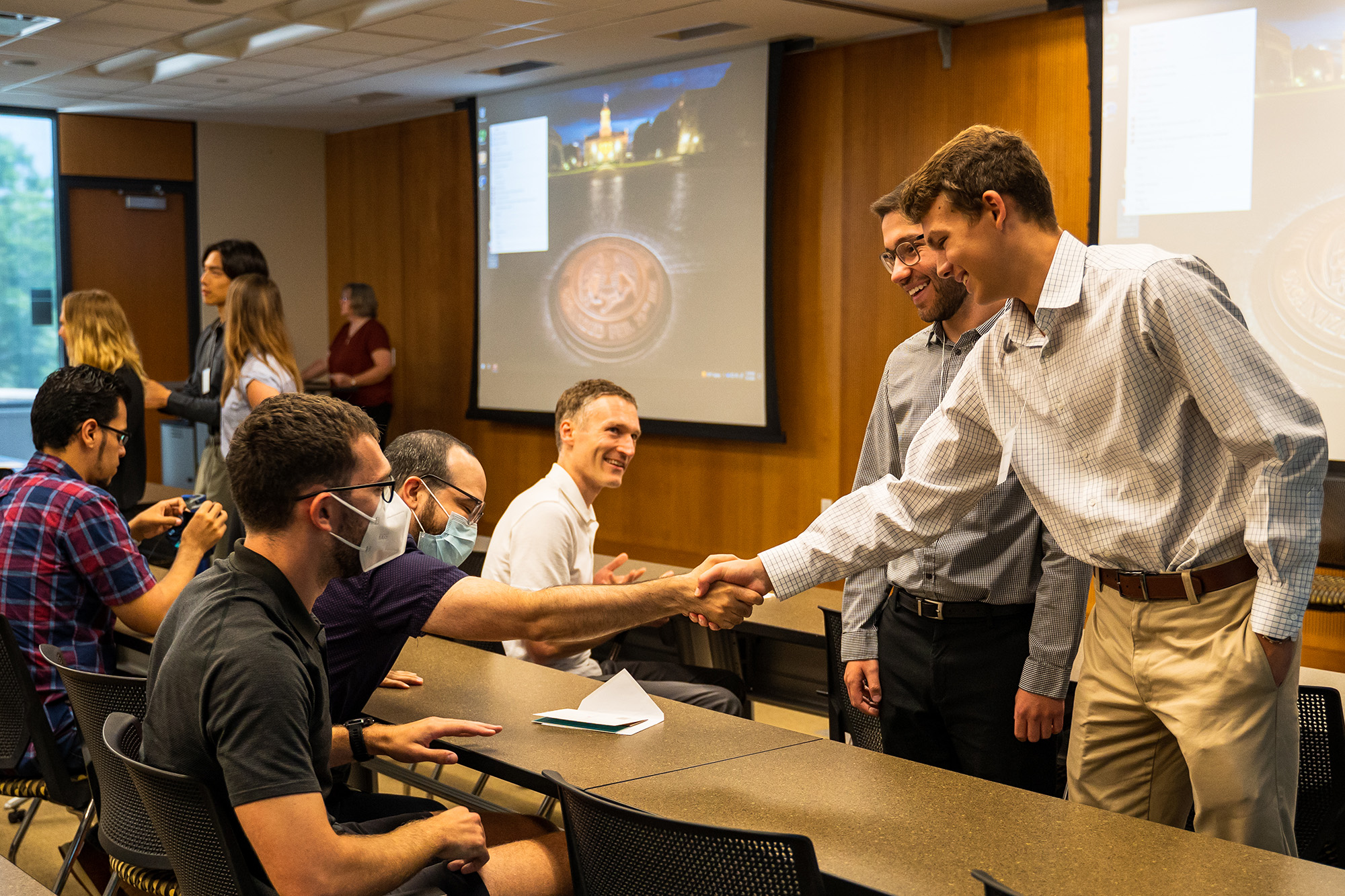
From 2008 to 2020
- 201: Number of students who have participated in ISIB
- 52%: Number of students who identify as ethnic minorities
- 56%: Number of students who identify as underrepresented minorities, underserved, and disadvantaged
- 65%: Number of students who identify as women
- 83%: ISIB graduates who are attending or have graduated from graduate school in biostatistics, statistics, or data science
Brian Fodale, a fourth-year mathematics major at Millersville University in Pennsylvania, learned about the ISIB from a classmate who participated in 2021.
“What intrigued me was the fact that I could apply the math that I’m good at and also help people with the public health aspect,” Fodale says.
The Howell, New Jersey, native says he has appreciated that the guest speakers come from a variety of fields.
“For example, we had one from Google, and while that isn’t necessarily biostatistics, it’s interesting to see how it can apply to other fields,” Fodale says.
Underwood agrees.
“It allows people like us who maybe had no idea what biostatistics was to see the amazing opportunities that biostatistics has,” says Underwood, who is from Mitchellville, Iowa. “The general theme from all the guest speakers has been that you can choose what you want to do and where you want to go. It’s nice to know that if this is the career you want to go into, there are jobs available.”
Keyla Pagán-Rivera knows firsthand the opportunities that biostatistics can offer—and how the ISIB can affect a person’s career trajectory.
While studying applied mathematics at the University of Puerto Rico, Pagán-Rivera traveled to Iowa to become part of the second ISIB group in 2009. She was curious about the field of biostatistics, but she actually planned to become a math teacher, having already earned a BS in secondary education in mathematics.
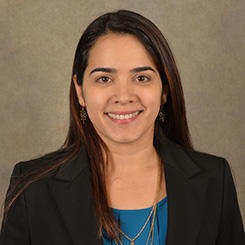
“The support that I found at the University of Iowa, both during the program and during grad school, was amazing. For some people, it might be the first time that they’re away from home, and knowing you’re going to have support is important.”
“Little did I know that it would change my career entirely,” Pagán-Rivera says. “I realized I would rather be analyzing data and doing stats than teaching, and it was like a domino effect from there.”
Pagán-Rivera returned to Iowa to get a master’s degree and PhD in biostatistics. She now works as a research staff member for the nonprofit Institute for Defense Analyses outside Washington, D.C. And while she’s not working in the health care industry, she says her education prepared her well to apply statistical methods to a different field.
This summer’s ISIB students worked on a range of research projects with faculty, from using biomarkers to help predict which patients are most likely to progress to renal failure in the next year to using different models to process images to detect skin cancer.
Fodale and Underwood say they appreciate working with students who have different majors.
“I’m a biology major, one of my peers is majoring in computer science, and another is a statistics major,” Underwood says. “It’s nice that we can all bring a different approach and ideas to the project. That’s how this sort of research gets done.”
A large part of the ISIB’s success over the years, Zamba says, comes down to the faculty.
“The faculty is dedicated to the institute, and each year, they are willing to mentor the new cohort of students,” Zamba says. “Iowa’s program, with its mentorship aspect, has become a model for other institutions to emulate.”
Zamba says the wealth of resources at Iowa, including its health sciences programs and the presence of University of Iowa Hospitals & Clinics, also make it uniquely qualified to host a program like the ISIB. Students have opportunities such as shadowing Iowa’s biostatisticians during meetings with researchers.
“They can silently watch how we interact with medical doctors and others, hear about the problems they are trying to solve and how we get involved to find solutions,” Zamba says. “Then, as we return to our office following those meetings, the students have another opportunity to ask questions about the meeting we’ve all attended with the MDs and watch as we begin to transcribe the problems into mathematically solvable questions. It’s really advantageous for them to see us in action.”
Zamba looks at more than a student’s academic track record when considering potential ISIB participants.
“I want to make sure they fit in this environment,” Zamba says. “Can they work in a collaborative setting? We want them to become friends and remain friends for the rest of their lives.”
That extra effort seems to be paying off. Fodale and Underwood say this summer’s group quickly gelled and have been enjoying their time together, whether it’s in class, hanging out in the residence hall, eating out in downtown Iowa City, or on field trips to local spots such as Coralville Lake.
“Everybody brings their own personalities and ideas to the group and makes it so fun,” Underwood says. “I’ve made great friends here. It might be the best summer I’ve had yet.”
“We have a small group, so we’re able to do everything together,” Fodale says. “Hearing about everybody’s background, where they’re from, their family traditions, and how that all applies to what we do together as a group is really interesting. It’s fun just to sit around at dinner and listen to the stories everyone tells.”
The Bureau of Labor Statistics has projected the overall employment of statisticians, including biostatisticians and data scientists, to grow 35% from 2019 to 2029, much faster than the average for all occupations.
While recruiting students for Iowa’s biostatistics graduate program isn’t necessarily a main goal of ISIB, it does give undergraduate students a deep look at the program.
“I think about 30% of our graduate program right now is former ISIB students,” Zamba says. “Our graduate program attempts to recruit the best from all walks of life, and the ISIB may have something to do with that.”
Fodale says Iowa definitely will be on the list of graduate schools he applies to.
“It feels like a small community within this big school, and I really like that,” Fodale says. “We have a tight-knit community at Millersville, and it’s good to see that is something that Iowa has to offer as well.”
Pagán-Rivera never thought when she left Puerto Rico it would be for Iowa, but she’s glad she did.
“Deciding where you go for a PhD program is not a trivial thing,” Pagán-Rivera says. “I had never lived outside the island before coming to Iowa. But feeling welcomed and liking what you do and liking the people around you make a difference. The support that I found at the University of Iowa, both during the program and during grad school, was amazing. For some people, it might be the first time that they’re away from home, and knowing you’re going to have support is important.”
